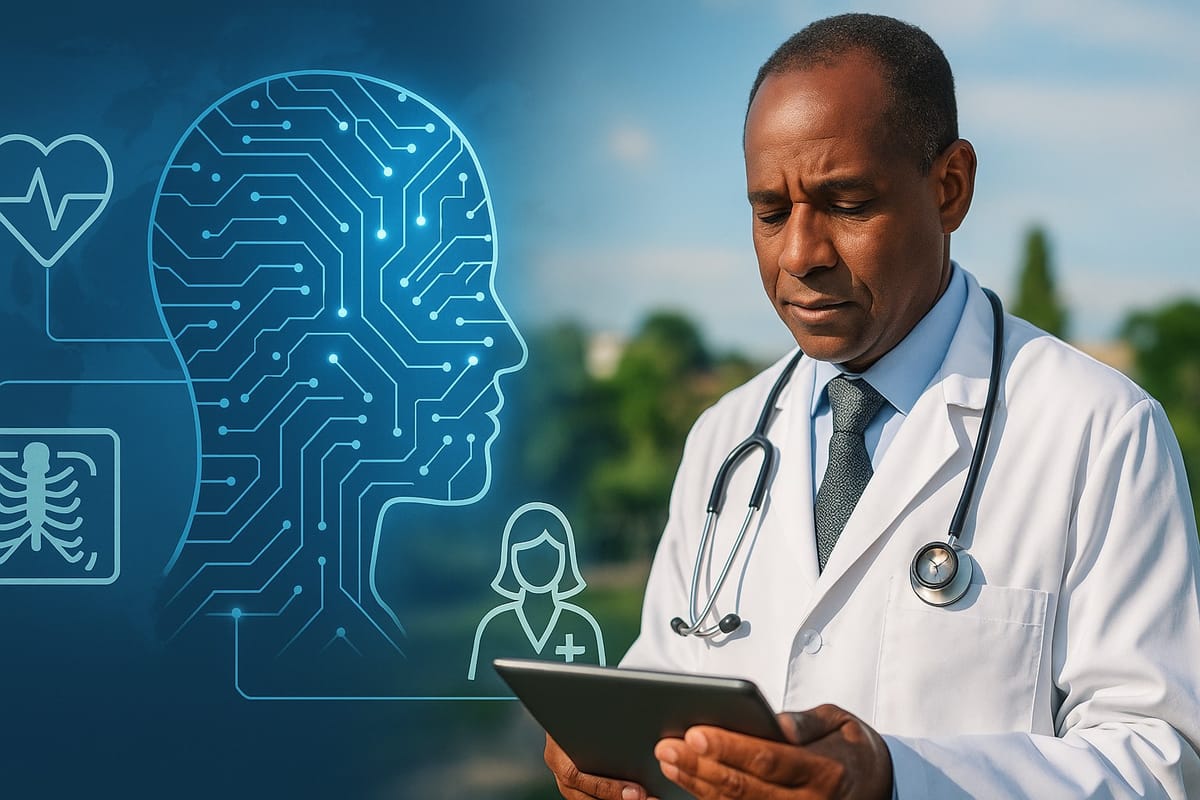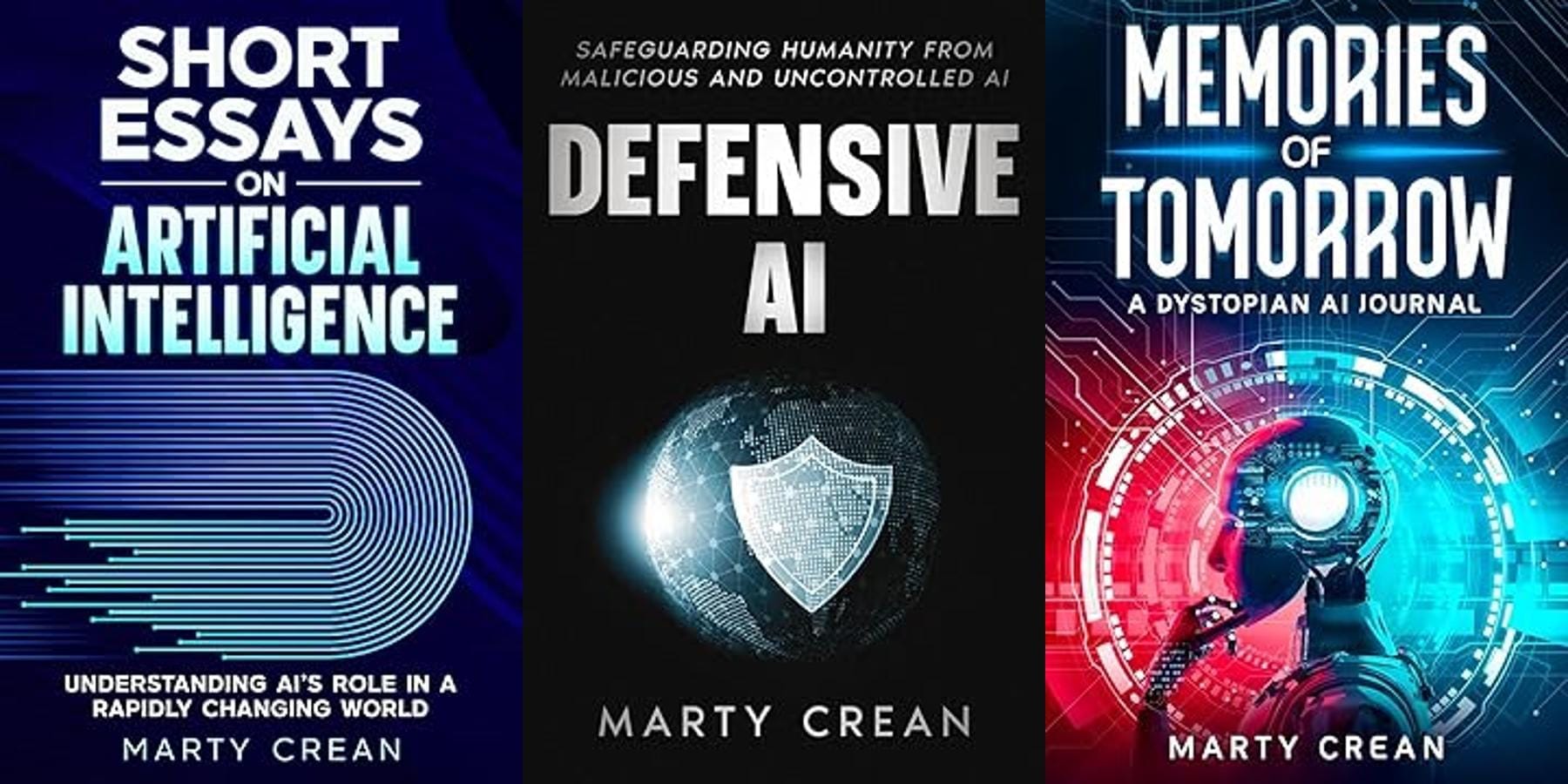Part 7 of 7 – AI in Healthcare: Toward Global Health Equity

Proper health extends far beyond treating illness when it strikes. It encompasses supporting people in living healthier, longer, and more vibrant lives wherever they may be. This broader understanding of wellness becomes especially critical when we consider the vast disparities in healthcare access that persist across our interconnected world.
Global health equity represents both a moral obligation and a practical necessity in our interconnected age. When health crises emerge, from sweeping pandemics to environmental health threats, they respect no political boundaries or economic divisions. The vulnerability of any population becomes a shared risk for all. This reality makes ensuring equitable access to healthcare services, accurate diagnosis, and preventive interventions across all communities essential for creating a safer and healthier planet for everyone.
The potential of artificial intelligence in addressing these challenges is not just theoretical; it's a beacon of hope. AI technologies offer a revolutionary way to bridge the persistent gaps in healthcare delivery that have long separated privileged communities from underserved populations. Instead of accepting these disparities as inevitable, we can harness intelligent systems to empower communities that medical advances have historically left behind.
Consider the reality facing countless rural clinics worldwide. These healthcare facilities often operate with dedicated general practitioners who lack access to specialist consultations that urban patients take for granted. In these settings, AI-powered diagnostic tools can provide sophisticated image interpretation capabilities that rival those found in major medical centers. A chest X-ray taken in a remote village can now receive the same level of analytical precision as one examined in a metropolitan hospital.
Similarly, natural language processing technologies are breaking down communication barriers that have long hindered effective patient care. These systems can translate complex medical instructions into local dialects and languages, ensuring that patients truly understand their treatment plans rather than simply nodding along to instructions they cannot comprehend. This technological bridge between medical knowledge and local understanding represents a fundamental shift in how healthcare can reach diverse populations.
Resource allocation presents another area where AI demonstrates remarkable practical value. Predictive modeling systems can analyze local health patterns, seasonal variations, and supply chain constraints to guide the distribution of limited medications and vaccines. Instead of relying on broad generalizations or delayed bureaucratic processes, these systems enable responsive resource management that adapts to real-time community needs, providing reassurance about the efficiency of healthcare management.
These applications are not distant possibilities waiting for future development; they are already in use. They represent emerging realities already being tested and implemented across communities in the Global South, demonstrating that technological innovation can serve impartiality rather than exacerbating existing divides.
The scalability offered by AI-powered digital health platforms addresses one of the most persistent challenges in global healthcare delivery. Cloud-based decision support tools operate efficiently across vast geographic distances, bringing sophisticated medical knowledge to locations where such expertise would otherwise remain unavailable. Low-power mobile diagnostic applications can function effectively even in areas with limited electrical infrastructure, while telemedicine interfaces connect patients with healthcare providers across previously insurmountable distances.
These technological solutions directly confront the traditional barriers that have kept quality healthcare concentrated in wealthy urban centers. Geography loses much of its power to isolate communities when diagnostic capabilities can travel through internet connections. Cost barriers diminish when digital tools can serve thousands of patients simultaneously. Provider scarcity becomes less critical when AI systems can augment the capabilities of available healthcare workers.
Importantly, AI does not seek to replace human care in these contexts. Instead, it makes quality care possible where it would otherwise be absent. A single healthcare worker equipped with AI-enhanced diagnostic tools can serve a community more effectively than multiple providers operating without such support.
The most promising applications of AI in global health equity move beyond traditional top-down medical models toward approaches that genuinely engage with local communities. Machine learning systems excel at identifying hyperlocal health trends that might escape notice in broader epidemiological studies. These insights enable healthcare interventions to address the specific challenges facing neighborhoods or populations rather than applying generic solutions.
Customized outreach strategies become possible when AI systems can analyze local communication patterns, cultural preferences, and trusted information sources. Rather than broadcasting uniform health messages that may resonate poorly with diverse audiences, these systems can craft approaches that speak authentically to specific communities while maintaining scientific accuracy and relevance.
Perhaps most significantly, AI technologies can support the development of collaborative solutions that involve community members as partners rather than passive recipients of external interventions. When local knowledge combines with technological capabilities, the resulting healthcare approaches often prove more effective and sustainable than those imposed from outside, making the audience feel included and valued in the process.
Realizing AI's potential for global health equity requires more than technological sophistication. It demands committed attention to ethical design principles, inclusive data practices, and genuine international cooperation. The data used to train AI models must authentically reflect the diversity of global populations, rather than perpetuating the biases present in historical medical research.
System development must proceed with a deep understanding of local needs, constraints, and cultural contexts. What works effectively in one setting may prove entirely inappropriate in another, not due to technological limitations but because of differences in social organization, economic resources, or health beliefs. Successful AI implementations require genuine partnerships with local communities rather than technological colonialism that imposes external solutions without meaningful consultation.
While AI holds great promise for global health equity, it also presents potential risks and ethical concerns that demand ongoing vigilance. Algorithmic bias can emerge from training data that inadequately represent specific populations, resulting in diagnostic tools that are effective for some groups but fail others. Language limitations can exclude entire communities from accessing AI-powered healthcare tools. Reliance on Western-centric clinical guidelines can lead to inappropriate treatment recommendations for populations with distinct genetic backgrounds or disease patterns. These risks underscore the need for the responsible and inclusive implementation of AI in healthcare.
Enabling trust through transparency is crucial for the effective implementation of AI in healthcare. Communities that have experienced exploitation or neglect from medical institutions understandably approach new healthcare technologies with skepticism. Demonstrating accountability through clear explanations of how AI systems operate, what data they utilize, and how they arrive at their conclusions helps establish the credibility necessary for effective implementation. Transparency is a fundamental principle that should guide the development and deployment of AI in healthcare.
The ultimate promise of AI in global health extends beyond simply improving healthcare services. It offers the possibility of genuinely democratizing medical innovation by bringing cutting-edge capabilities to every village, every neighborhood, and every person, regardless of their economic circumstances or geographic location. This vision of democratic healthcare is not a distant dream, but a tangible goal that AI can help us achieve.
This vision of democratic healthcare does not imagine technology eventually reaching underserved populations as an afterthought. Instead, it envisions AI systems designed from the outset with global equity as a primary consideration. In this approach, the needs and perspectives of marginalized communities inform technological development, rather than being accommodated as secondary concerns later.
When AI development proceeds with this commitment to inclusive design, the resulting systems prove more robust and effective for all users. Technologies that work well across diverse populations, languages, and resource constraints ultimately serve everyone better than those optimized for narrow circumstances.
The path toward global health equity through AI requires sustained commitment from technologists, healthcare providers, policymakers, and community leaders working in genuine partnership. Success depends not on the sophistication of individual AI systems but on the wisdom and justice with which we deploy these powerful tools in the service of human flourishing for all.
BearNetAI, LLC | © 2024, 2025 All Rights Reserved
Support BearNetAI
BearNetAI exists to make AI understandable and accessible. Aside from occasional book sales, I receive no other income from this work. I’ve chosen to keep BearNetAI ad-free so we can stay independent and focused on providing thoughtful, unbiased content.
Your support helps cover website costs, content creation, and outreach. If you can’t donate right now, that’s okay. Sharing this post with your network is just as helpful.
Thank you for being part of the BearNetAI community.
Books by the Author:

Categories: Artificial Intelligence in Healthcare, Global Health Equity, Ethical AI Design, Digital Health Innovation, Public Health Policy
Glossary of AI Terms Used in this Post
Algorithmic Bias: Systematic errors in AI outputs that occur when training data reflects historical or social biases, leading to unfair or discriminatory outcomes.
Cloud-Based Decision Support Tools: AI-powered platforms hosted on remote servers that provide medical insights and recommendations accessible across geographic distances.
Diagnostic Tools: AI systems designed to assist healthcare professionals in identifying medical conditions through imaging, data analysis, or symptom assessment.
Machine Learning: A subset of AI where algorithms improve performance over time by learning from data without being explicitly programmed.
Natural Language Processing (NLP): AI techniques enabling computers to understand, interpret, and generate human language, often used for translation and medical communication.
Predictive Modeling: AI-driven analysis that forecasts outcomes such as disease spread or resource demand based on historical and real-time data patterns.
Telemedicine Interfaces: Digital platforms enhanced by AI that connect patients with healthcare providers remotely, often through video, chat, or diagnostic integrations.
Transparency: The principle of making AI system operations, data use, and decision-making processes understandable and explainable to users.
Citations:
Altman, R., & Tang, H. (2022). Artificial Intelligence in Medicine: Applications and Challenges. Nature Medicine.
Brinkmann, B., & Rojas, R. (2021). Machine Learning in Global Health: Potentials and Pitfalls. Journal of Global Health.
HIMSS. (2023). Global Health Equity and AI: Strategies for Inclusive Implementation. Healthcare Information and Management Systems Society.
Meskó, B., & Topol, E. J. (2021). The Role of Artificial Intelligence in Precision Medicine. Nature Digital Medicine.
Nguyen, P., & Tran, T. (2020). Natural Language Processing for Healthcare Equity: Breaking Barriers in Patient Communication. Springer.
United Nations. (2022). Health for All: Leveraging Digital Innovation for Global Equity. UN Policy Paper.
WHO. (2021). Ethics and Governance of Artificial Intelligence for Health. World Health Organization.
This post is also available as a podcast:
LinkedIn BlueskySignal: bearnetai.28